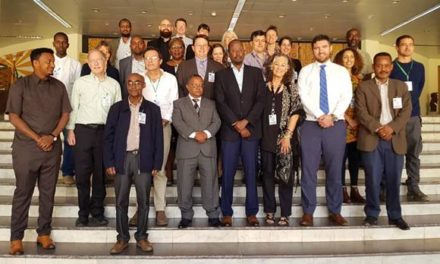
Aviation only accounted for 2,5% of all global emissions – RDJ Group

By Clifton Movirongo.
An energy and sustainability consultancy, RDJ Publishing in collaboration with RDJ Consulting Services recently reported that aviation only accounted for 2,5% of all global emissions.
This was revealed by David Jarrett, a Group Executive: Operations at RDJ Consulting, who added that the volume of greenhouse gases produced by aircraft is estimated at 1 gigaton each year, out of a total of 40 GT, i.e., 2.5%.
“If you had a 50% reduction, for example, you would only be moving 1% roughly or 1.25% from the number of emissions globally that we were putting out. You could see that that would be a Herculean task, because those of you that understand from a statistical perspective, in most cases you’re lucky if you get 3 to 5% efficiencies over maybe a 1 to 5 year period in trying to do some things,” Jarrett said at a public discussion titled “Sustainable Aviation, Are We Ready?”
According to information presented by the RDJ Group, this may seem low as a relative value, but it contributes to global warming differently. Previously, commercial aviation was thought to be responsible for approximately 5% of the world’s climate-warming problem.
“The production of cirrus clouds induced by the condensation traces of aircraft (clouds appearing between 5,000 and 14,000 m altitude) contributes with 5% to the global radiation balance of the planet,” added Jarrett.
“10,000 tonnes is the limit or the gate that is generally used if you want to use a general yardstick. And unfortunately for Namibia, we have now as, in terms of registered aircraft in Namibia, it is my understanding that most of our aircraft are below it,” he commented.
During the discussion, the Group provided current factors that support the development of Sustainable Aviation and an overview of what is possible for Namibia about adopting the discussed measures. The group also added that electric aircraft may be possible from the mid-2030s but, unless there is a major technical breakthrough, they will be small, regional aircraft flying short, local routes.
“Current projections estimate that demand for air passenger journeys in 2050 could exceed 10 billion. The expected 2021-2050 carbon emissions on a ‘business as usual’ trajectory is approximately 21.2 gigatons of CO2,” according to findings from a research team of the RDJ.
Meanwhile, Jarrett pointed out that the Biden administration is contemplating incentives to support private-sector production of sustainable aviation fuel (SAF) as it searches for ways to eliminate greenhouse gas emissions in the hard-to-electrify aviation industry.
“The United States and Europe are trying to find ways to encourage production and adoption of SAF, which is two to five times more expensive than standard jet fuel,” Jarrett added.
SAF is a fuel produced from sustainable resources that reduces aviation fuel life cycle emissions by up to 80% compared with conventional alternatives. The rise of SAF is seen as a significant development toward decarbonising the aviation industry, which is responsible for approximately 2.5% of global carbon emissions.











































